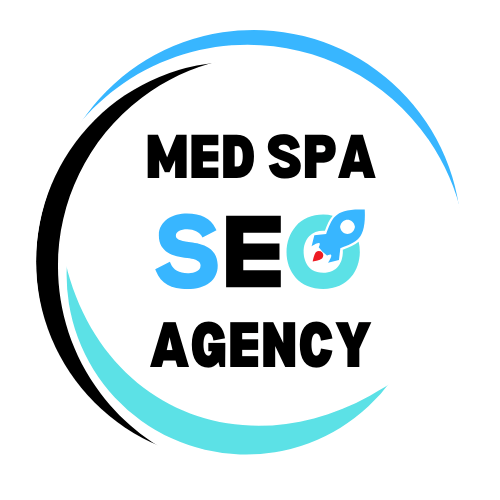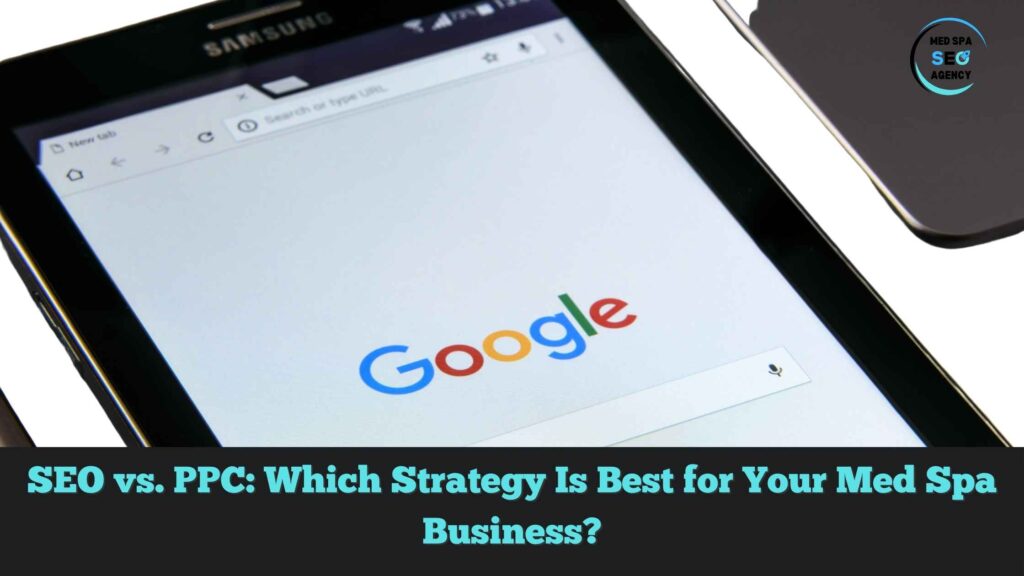SEO vs. PPC: Which Strategy Is Best for Your Med Spa Business? Pros and Cons
If you own a med spa business, you’re likely looking for the best way to attract new clients online. But should you focus on SEO or PPC? Both strategies can boost your visibility on search engines, but they work in different ways. In fact, many successful med spas use SEO and PPC together to maximize their reach and drive consistent traffic. This article will explain the difference between SEO and PPC, their pros and cons, and help you decide which one is better for your med spa business. The Search Landscape When people search for med spa services, they turn to search engines like Google. The search engine results pages (SERPs) show two types of results: organic search results and paid search ads. Organic search results are achieved through search engine optimization (SEO). These results appear naturally when your website is relevant and well-optimized for specific keywords. Paid search ads are displayed at the top of the page or at the bottom, labeled as “Ad.” These ads are powered by pay-per-click (PPC) marketing, where you pay each time someone clicks on your ad. Understanding how these results work is essential for choosing the right search marketing strategy for your med spa. Definition of SEO SEO (Search Engine Optimization) is the process of improving your website’s visibility in organic search results. It helps you attract free, high-quality organic traffic by optimizing your website for relevant keywords. Here are the main components of SEO: 1. Keyword Research Keyword research is the foundation of SEO. It involves finding relevant words and phrases that potential clients use when searching for med spa services. By understanding what your audience is searching for, you can create targeted content that ranks high on search engine results pages. 2. On-page Optimization On-page SEO focuses on optimizing individual web pages to improve organic visibility. This includes: Using keywords in meta titles, descriptions, headers, and throughout the content. Ensuring high-quality, informative content that answers user queries. Optimizing images with alt tags for better visibility. 3. Off-page Optimization Off-page SEO involves activities outside your website that impact your organic search results. This includes building high-quality backlinks from other reputable sites, engaging on social media, and managing online reviews. Off-page SEO builds authority and credibility, which can improve your ranking on search engines. 4. Technical SEO Technical SEO focuses on the backend structure of your website, ensuring that it is fast, secure, and easy to navigate. This includes: Enhancing website speed for a better user experience. Making your website mobile-friendly to reach more users. Implementing secure HTTPS connections for data protection. Creating an XML sitemap to help search engines index your pages more effectively. Pros of Using SEO 1. SEO Is Sustainable SEO delivers long-term benefits. Once your website achieves a good ranking on search engine results pages, you’ll continue to receive traffic without ongoing costs. 2. SEO Is Cheaper In The Long Term While SEO requires an initial investment in content creation and optimization, it’s more cost-effective than PPC in the long run because you don’t pay per click. 3. SEO Builds Awareness Appearing in organic results enhances brand awareness and positions your med spa as an industry leader. 4. SEO Increases Credibility and Trust Users trust organic search results more than ads, boosting your credibility and authority. 5. No Cost Per Click With SEO, you don’t have to pay each time someone visits your site, unlike PPC ads. This makes SEO a budget-friendly option for sustained growth. Cons of SEO 1. SEO Is Highly Competitive Ranking high on search engines is competitive, especially in the med spa industry. It requires consistent effort and high-quality content creation. 2. SEO Takes Time Unlike PPC, SEO campaign takes time to deliver results. It may take months to see significant traffic and conversions. 3. SEO Requires Authoritative Content To rank higher, SEO requires producing high-quality, authoritative content that provides real value to users. Definition of PPC PPC (Pay-Per-Click) marketing is a paid advertising strategy that drives instant traffic to your website. When you run a PPC campaign, your ad appears at the top of the page in the search engine results pages, and you pay each time someone clicks on it. Here’s how PPC marketing works: 1. Keyword Research Just like SEO, PPC starts with keyword research to identify high-converting keywords for your med spa services. 2. Bid Setting In PPC marketing, you set a bid for each keyword. Higher bids increase your chances of appearing at the top of the page. 3. Creation of Ad Crafting persuasive ad copy is crucial for attracting clicks. Your ad should be relevant, informative, and include a strong call-to-action. 4. Audience Targeting and Retargeting PPC platforms like Google Ads allow you to target specific audiences by location, demographics, and interests. Retargeting lets you re-engage users who previously visited your site. Pros of Using PPC 1. Instant Visibility PPC ads provide immediate visibility on search engines, driving instant traffic to your med spa website. Unlike organic search, where it takes time to rank, PPC puts your ad at the top of the page of search results. This makes it an effective digital marketing strategy for generating quick leads and appointments. 2. PPC Allows For Precise Targeting With PPC marketing, you can precisely target your audience based on location, age, interests, and more. This ensures that your ads reach the right people who are actively searching for med spa services. By leveraging advanced targeting options, you can improve the conversion rate of your campaigns. 3. Quick Experimentation PPC allows for rapid testing of different ad copy, keywords, and landing pages. You can easily experiment with different approaches to see which performs best. By analyzing the data, you can make quick adjustments to optimize your campaigns for the best results. 4. Measurable Results One of the biggest advantages of PPC is the ability to track and measure your campaigns in real time. PPC platforms provide detailed analytics, including clicks, impressions, and conversion rates. Additionally, Google Ads uses a quality score to determine

